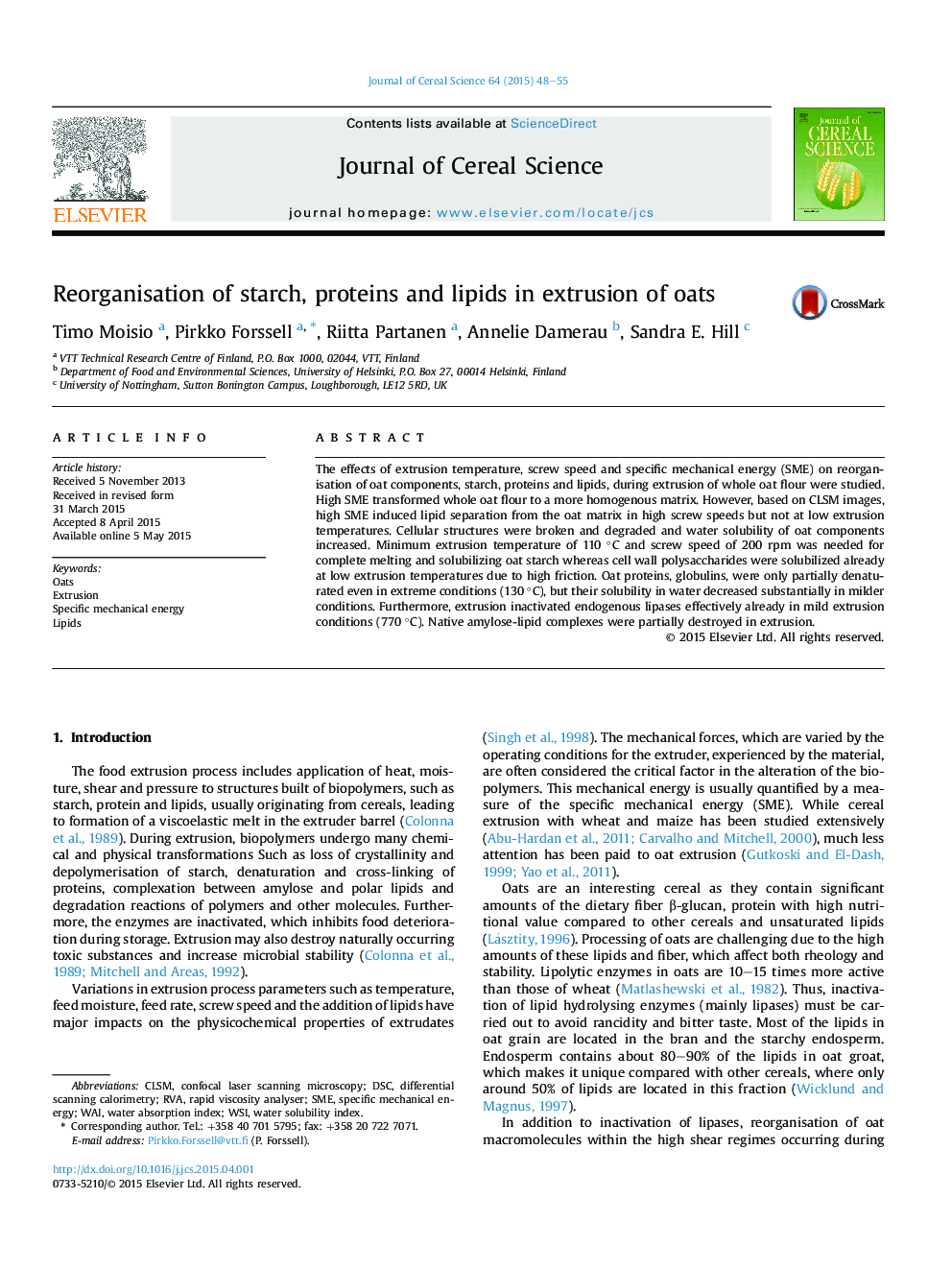| کد مقاله | کد نشریه | سال انتشار | مقاله انگلیسی | نسخه تمام متن |
|---|---|---|---|---|
| 4515624 | 1624898 | 2015 | 8 صفحه PDF | دانلود رایگان |
• Extrusion at 70 °C was enough to inactivate endogenous lipases of oats.
• SME moulded oat matrix into more homogenous structure.
• High screw speed resulted extensive separation of lipids from the matrix.
• Extrusion partially denaturated oat globulins and decreased protein solubility.
The effects of extrusion temperature, screw speed and specific mechanical energy (SME) on reorganisation of oat components, starch, proteins and lipids, during extrusion of whole oat flour were studied. High SME transformed whole oat flour to a more homogenous matrix. However, based on CLSM images, high SME induced lipid separation from the oat matrix in high screw speeds but not at low extrusion temperatures. Cellular structures were broken and degraded and water solubility of oat components increased. Minimum extrusion temperature of 110 °C and screw speed of 200 rpm was needed for complete melting and solubilizing oat starch whereas cell wall polysaccharides were solubilized already at low extrusion temperatures due to high friction. Oat proteins, globulins, were only partially denaturated even in extreme conditions (130 °C), but their solubility in water decreased substantially in milder conditions. Furthermore, extrusion inactivated endogenous lipases effectively already in mild extrusion conditions (770 °C). Native amylose-lipid complexes were partially destroyed in extrusion.
Journal: Journal of Cereal Science - Volume 64, July 2015, Pages 48–55
